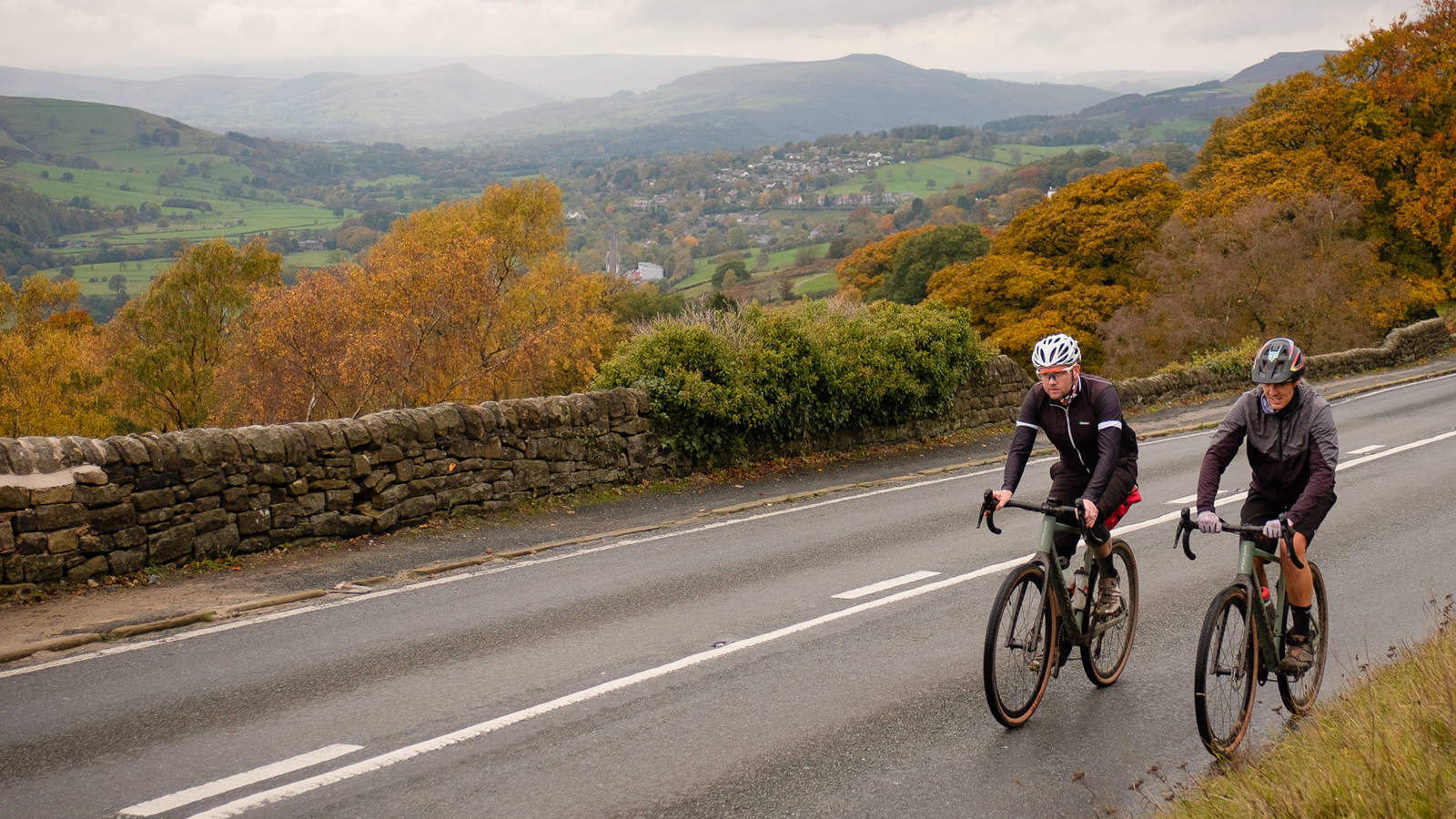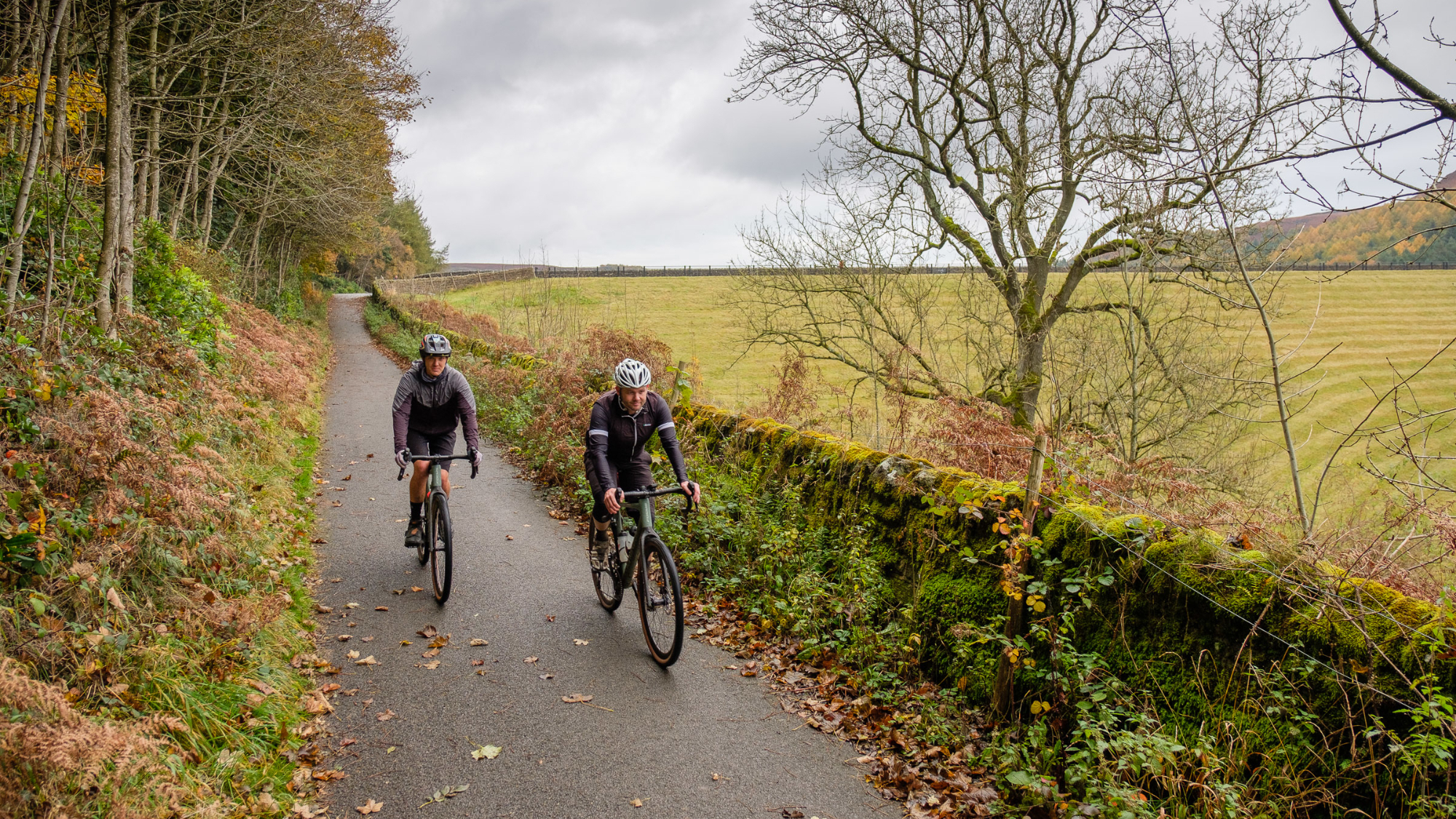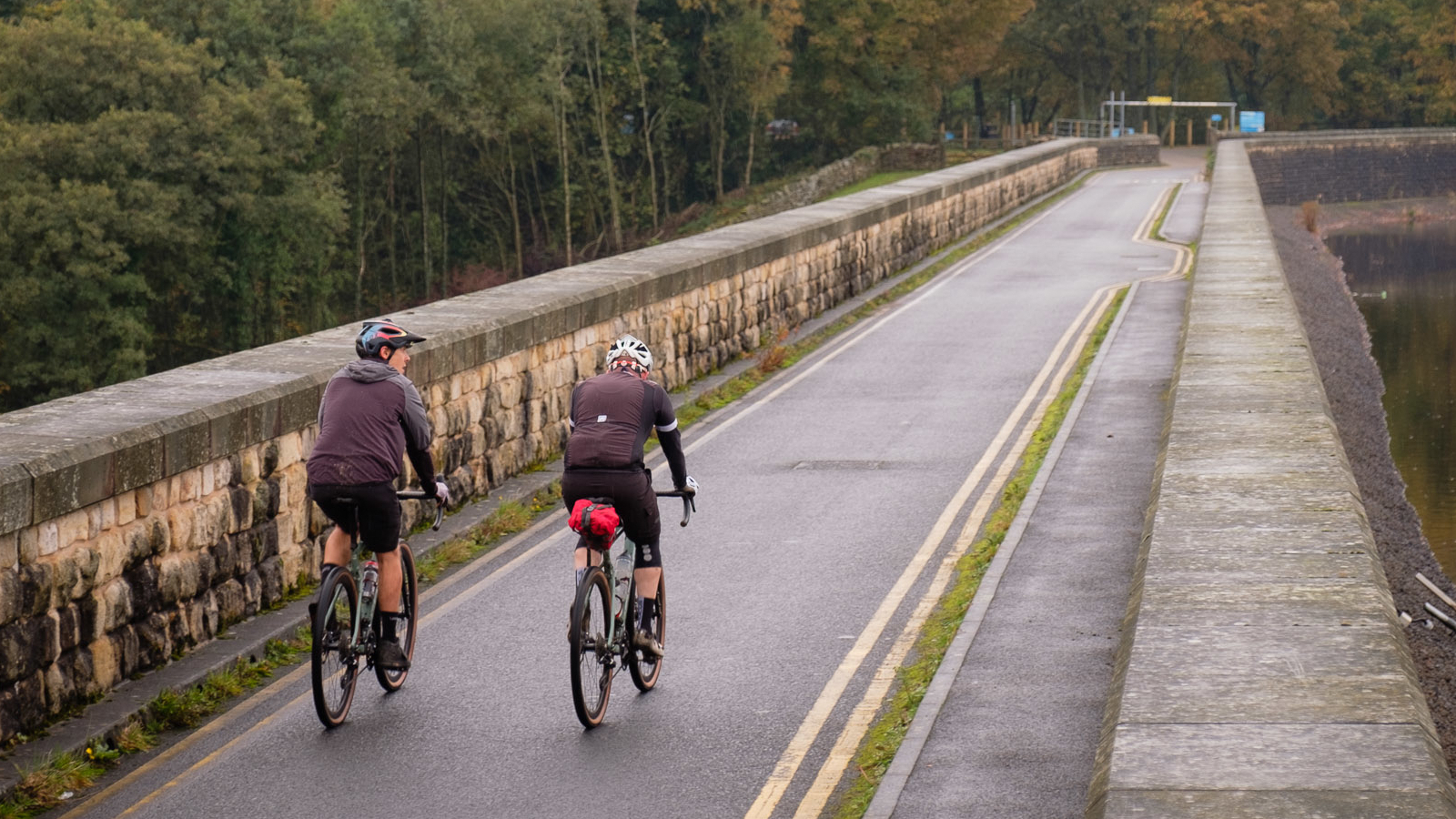
Every year since 2010, Rapha has held a festive riding challenge of riding 500 kilometers between December 24th to the 31st. The Festive 500 originally started as a UK-based road cycling club challenge, but in the 13 years since its inception, it has grown to become a global challenge taken on by thousands of riders.
Riding 500km in just over a week is a big ask, especially if the majority of your riding is off-road, but it's especially difficult over the festive season. The limited daylight hours, the potential for bad weather, and the desire to hibernate and eat the Christmas dinner leftovers all contribute to sucking up enthusiasm. However, by signing up for a challenge you are much more likely to get your kit on and ride instead of sampling another box of chocolates.

1. Setting a goal
I struggle to train without a goal in mind, so I have entered some XC races and longer gravel events in 2024 to keep me focused and prevent me from dipping into the biscuit box too often over the festive break. I have done the Festive 500 many times in the past, but they were before kids when I was riding a lot more on the road, so this year will be a tougher challenge than previously. I always found it a fantastic way to kick start my fitness early in the year and meant I was far more likely to keep pushing through the early months as it's far easier to train if you are already halfway fit.
There are many ways you can attempt it, by either sticking rigidly to shorter, more consistent rides or, like me fitting a couple of longer point-to-point rides in by pedaling to visit family. However you do it there no getting around the fact that it a lot of low-intensity mileage riding, which is great for burning off the extra sprouts but doesn't add much to the dynamic and explosive fitness requirements you need to maximize your trail time.

2. Making it relevant
So, with this in mind, I spoke to Jonny Thompson of Fit4racing. If you are unfamiliar with Jonny's work, he runs an app and website-based training system for MTB and moto riders looking to maximize their performance through structured strength work and functional mobility-based workouts. We have featured some ways to improve your mountain bike fitness with some of his workouts before, but we needed to look at a different approach for this challenge.
As bike riders, a lot of us are guilty of ignoring the gym and just riding instead. Still, by implementing a structured program that's designed around your riding, you can improve not only your overall fitness but also what you are capable of when you are on your bike, whether that's an all-day enduro event, an XC marathon epic, or just racing your mates in the woods.
The long-distance nature of the Festive 500 means attempting an intensive strength program wouldn't be beneficial as you'll only add to your already growing fatigue, and attempting weight training when already very tired is a recipe for bad form and potential injuries. Instead, Jonny has advised me to work on functional movements between rides to work on my ability to move freely and address any imbalances I have to deal with the dynamic nature of mountain biking.
I will be using key movements from the app, and they will all be bodyweight-only exercises that are designed to increase my range of movement and work on the supporting muscles instead of building strength or pushing my body too far into the red when I am better served recovering from my efforts on the bike. Not only will they help me progress as a rider, but they will also act as an active recovery, therefore increasing the likelihood of me being able to ride day after day.
Jonny offers programs that are designed to complement your goals, whether that's downhill racing, enduro, or XC, and they are split into two categories. Fit4racing is for the more dedicated athlete, with three gym days of training and an optional fourth day of bike-based work. I'll be using elements from the second option, Fit4riding, which is aimed at riders with limited access to a gym or who struggle to maintain fitness when juggling work, life, and family.

3. Training zones
As well as using various single-leg exercises and core strength and mobility workouts, I will also try to use some MTB-specific work in my rides. Most of my riding will be at a steady pace, often referred to as zone 2. If you are unfamiliar with training zones, there is a wealth of information online, but basically, zone two is an effort that challenges my body but at a pace I can maintain for a long time. If done correctly it is also great for burning fat by teaching your body to access different fueling sources instead of using up the Glycogen in our muscles. This has two benefits, not only will it aid me in longer distance races and events later down the line, but it will also hopefully help with shifting the extra kilos I'd usually gain over the Christmas period.
Riding a mountain bike often requires lots of high torque and low rev efforts, which, with a bit of planning, can be easily replicated on a road bike. For instance, when approaching a steep climb, instead of standing up and dancing on the pedals, you can drop into a harder gear and attempt the climb seated with a much lower cadence than you'd normally use on a tarmac incline. You can even introduce an interval element to this if your feeling really fit. Intervals are an effective, but hard way to gain fitness quickly, and by alternating the time you are at a maximum effort or by changing the level of effort, you can replicate the up-and-down nature of riding a technical off-road climb.

4. Kit choice
I will do the majority of my riding on my Argon18 Dark Matter gravel bike with some more road-friendly rubber fitted although I will hopefully include some off-road rides in between longer road rides as well as some trail riding if possible to keep me sane. By riding the bike I intend to use for events later in the year adds another level of specificity, and there's nothing like back-to-back rides to test your position and kit as any minor niggles soon become apparent and its easier to address such things as cleat position, as well as saddle and handlebar position before the season starts properly.
Once I've (fingers crossed) completed the Festive 500 and associated Fit4riding exercises, it should give me a solid base to up the intensity in the new year and work on my weaknesses and imbalances that can easily be overlooked when riding, but that soon becomes apparent when undertaking and strength and conditioning work, but with the prospect of upcoming races and having watched plenty of Jonny's YouTube content I am raring to go.
For more info, you can either download the Fit4racing app or check out Fit4racing.com.







